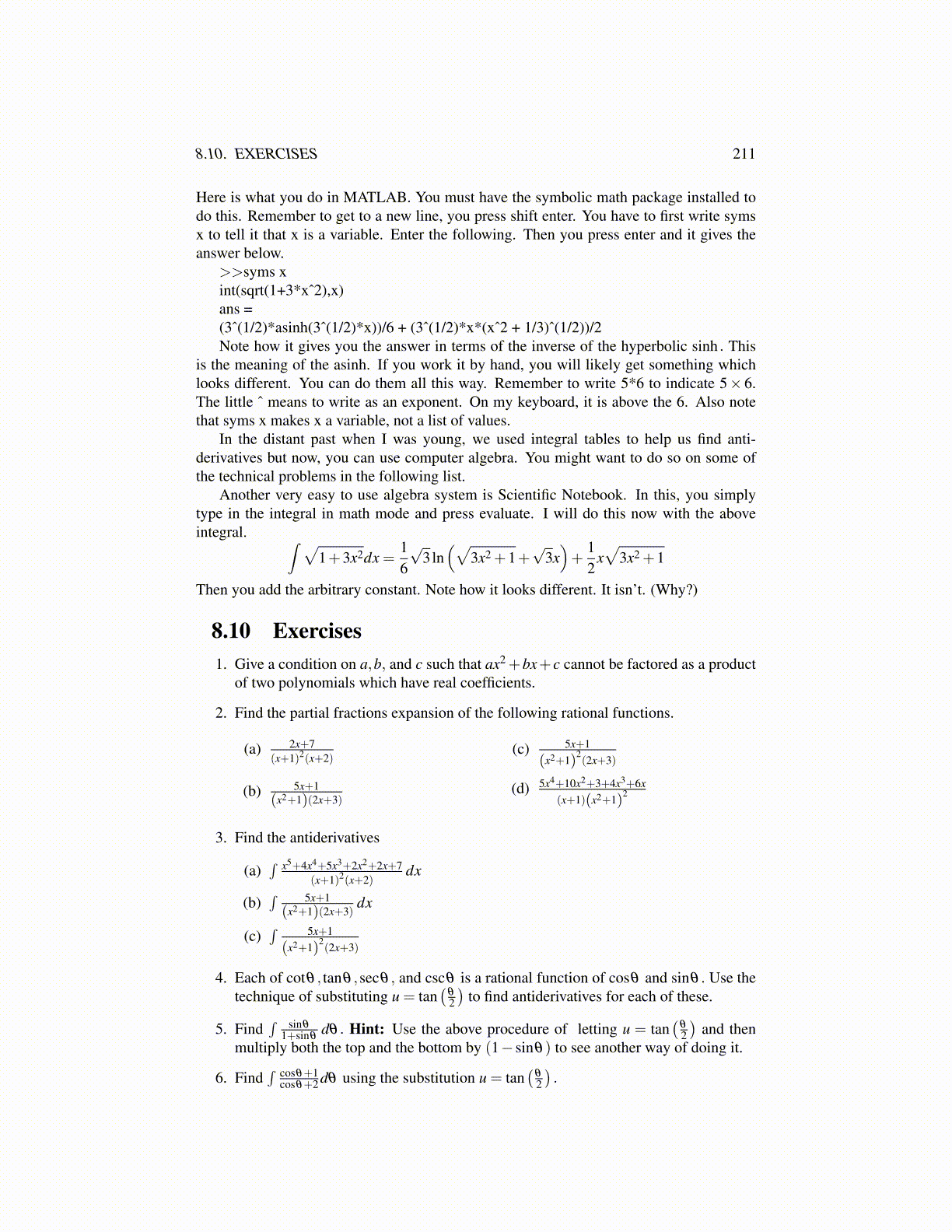
8.10. EXERCISES 211
Here is what you do in MATLAB. You must have the symbolic math package installed todo this. Remember to get to a new line, you press shift enter. You have to first write symsx to tell it that x is a variable. Enter the following. Then you press enter and it gives theanswer below.
>>syms xint(sqrt(1+3*xˆ2),x)ans =(3ˆ(1/2)*asinh(3ˆ(1/2)*x))/6 + (3ˆ(1/2)*x*(xˆ2 + 1/3)ˆ(1/2))/2Note how it gives you the answer in terms of the inverse of the hyperbolic sinh . This
is the meaning of the asinh. If you work it by hand, you will likely get something whichlooks different. You can do them all this way. Remember to write 5*6 to indicate 5× 6.The little ˆ means to write as an exponent. On my keyboard, it is above the 6. Also notethat syms x makes x a variable, not a list of values.
In the distant past when I was young, we used integral tables to help us find anti-derivatives but now, you can use computer algebra. You might want to do so on some ofthe technical problems in the following list.
Another very easy to use algebra system is Scientific Notebook. In this, you simplytype in the integral in math mode and press evaluate. I will do this now with the aboveintegral. ∫ √
1+3x2dx =16
√3ln(√
3x2 +1+√
3x)+
12
x√
3x2 +1
Then you add the arbitrary constant. Note how it looks different. It isn’t. (Why?)
8.10 Exercises1. Give a condition on a,b, and c such that ax2 +bx+c cannot be factored as a product
of two polynomials which have real coefficients.
2. Find the partial fractions expansion of the following rational functions.
(a) 2x+7(x+1)2(x+2)
(b) 5x+1(x2+1)(2x+3)
(c) 5x+1
(x2+1)2(2x+3)
(d) 5x4+10x2+3+4x3+6x(x+1)(x2+1)
2
3. Find the antiderivatives
(a)∫ x5+4x4+5x3+2x2+2x+7
(x+1)2(x+2)dx
(b)∫ 5x+1(x2+1)(2x+3)
dx
(c)∫ 5x+1
(x2+1)2(2x+3)
4. Each of cotθ , tanθ ,secθ , and cscθ is a rational function of cosθ and sinθ . Use thetechnique of substituting u = tan
(θ
2
)to find antiderivatives for each of these.
5. Find∫ sinθ
1+sinθdθ . Hint: Use the above procedure of letting u = tan
(θ
2
)and then
multiply both the top and the bottom by (1− sinθ) to see another way of doing it.
6. Find∫ cosθ+1
cosθ+2 dθ using the substitution u = tan(
θ
2
).